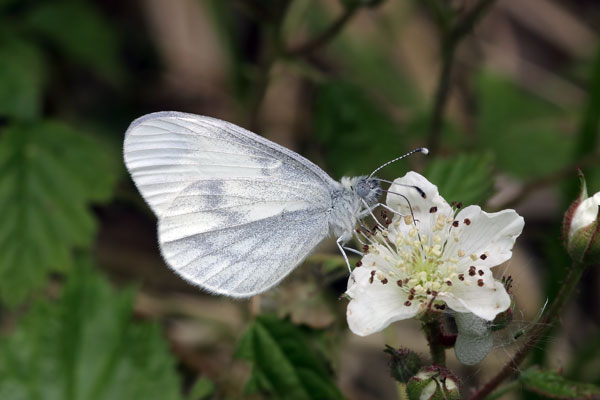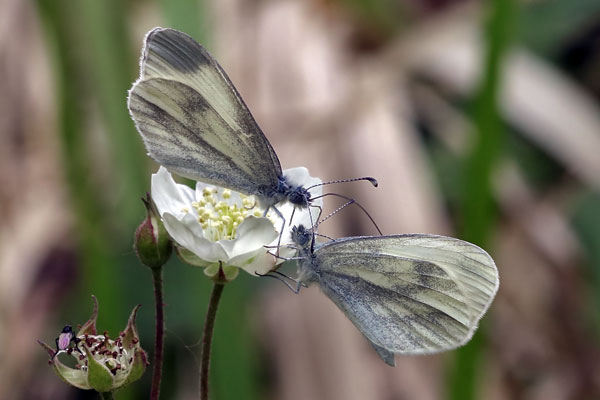Wood White (Leptidea sinapis) | Species | ||||||||||||||||||||||||||||||||||||||||||||||||||||||||||||||||||||||||||||||||||||||||||||||||||||||||||||||||||||||||||||||||||||||||||||||||||||||||||||||||||||||||||||||||||||
 Male. Taken at Bucknell Wood, Northants, on June 3rd 2021. (© David Hastings) (1/800th sec at f11)  Female . Taken at Wicken Wood, Bucks, on May 25th 2014. (© David Hastings) (1/200th sec at f13)  Male and female. Taken at Wicken Wood, Bucks, on May 31st 2014. (© David Hastings) (1/200th sec at f13) DescriptionFamily: Pieridae Wing span: 40 - 42 mm The most delicate of the white butterflies, the Wood White has suffered due to changes in woodland management and, in particular, the reduction in coppicing that allows new woodland clearings to develop that provide suitable conditions. Most of the populations in Britain are in the Midlands, central southern and south-west England, and south Wales. In Ireland it is only found in The Burren. Most colonies breed on rides and clearings in woods, although a few large colonies occur on coastal undercliffs. There are usually two broods per year, with adults being on the wing from mid-May to July, and in late July and August. The pupa is the over-wintering stage. The primary larval foodplants are Bird's-foot Trefoil, Bitter Vetch, Greater Bird's-foot Trefoil, Meadow Vetchling and Tufted Vetch. Nectar sources include a variety of flowers, favourites being Bramble, Bugle, Ragged Robin and Birds-foot Trefoil. Males spend their lives patrolling woodland rides and the edges of scrub in search of mates, flying about three feet off the ground. Endangered Earliest UK sighting: 18th May ; Latest UK sighting: 11th August Sightings
| |||||||||||||||||||||||||||||||||||||||||||||||||||||||||||||||||||||||||||||||||||||||||||||||||||||||||||||||||||||||||||||||||||||||||||||||||||||||||||||||||||||||||||||||||||||

